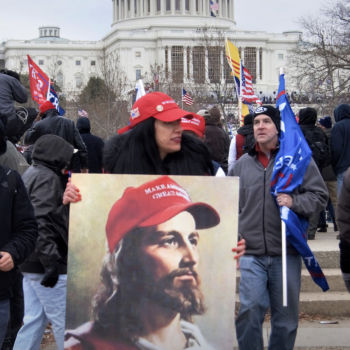This story necessarily starts at the harbor master’s office and a conversation with Lady J. It’s still early on this Sunday morning, and we are down on the pier. Lady J, the assistant harbor master, is giving a review of the responsibilities, the vocation if you will, of the Camden harbor master–maintain the moorings, ensure safety, repair the docks, rent out the anchors, ensure all ground tackle is in working order, measure the spaces between the moorings.
Toward the end of this conversation, I mention I’m heading up the hill for the first in-person worship services at First Congregational since the pandemic began in 2020. Lady J exclaims, “Oh, you’re just going to love Pastor Ute, and the organist, he really knows how to pull out all the stops. I mean, I haven’t been an active member there for five years or more, so if you mention my name they won’t know who I am, but it’s a wonderful congregation.”
This sentiment is familiar. I hear it or something akin frequently. “I don’t do church, but if I did do church I’d go to yours.” It was somehow reassuring to hear this same conversation play out relative to a church not in my own community, not even in my own region of the country. I hoofed it back up the hill with intention, certain I’d be sharing Lady J’s greeting with the pastor.
The First Congregational of Camden, Maine is a storied congregation, or as storied as a church can be in a quiet mid-coast town like Camden. My walking tour map tells me it’s the church where Edna St. Vincent Millay attended Sunday school.
Our family is on vacation for two weeks this June, using plane tickets we’d been holding since initial flights were cancelled in March of 2020. Wanting to use the tickets but travel to a less crowded locale, we decided on Maine.
The week prior, we’d discovered church reopenings were a little slower here than in our home state of Arkansas. Maine had fitted its mask guidelines to the CDC guidance the second week of June, so our first week in the state churches near us in Old Orchard Beach were not yet open. So our first Sunday in Maine, I made use of the riches of the Internet to instead watch a 2019 sermon by the presiding bishop of the Episcopal church, Michael B. Curry, at The Temple at Ocean Park, at a celebratory and commemorative service for the Chautauqua program in Maine. That huge 800-person sanctuary was packed for the occasion, and it left strange feelings in me as a viewer thinking of those kinds of crowds all gathered blithely in one place just a year before COVID-19.
The second week, even more determined to actually attend worship if I could, I called the office of First Congregational to reserve a spot in worship. The office manager was at first nervous about saying yes to a visitor, not so much because she feared they would lack room, but more because it was the first Sunday back and they were navigating the layers of technology now standard for all churches that had streamed their services digitally for the last year.
“We’re going to be ironing out all the details Sunday, and there may be glitches. It’s our first time back.”
Of course she couldn’t know that witnessing such glitches was, in my estimation, part of the holiness of worship itself in these “returning” times. My deepest hope as a guest would be to experience the congregation authentically just as they are in the return. Like witnessing a sort of homecoming.
The details matter. I walk in, mask on, about 9:15 a.m., and the first person I meet at the door asks, “Are you Clint?” So I know this is a congregation known to each other, one that can easily identify newcomers. They’ve hand-made a name-tag for me, which I loop over my head and wear proudly.
First Congregational is a typical, iconic, white wooden church, clean and classic. Aside from the lovely banner gracing the chancel, it’s all straight lines and open space. Some pews have been cordoned off, for social distancing. Everyone is wearing masks, thus more strict than state guidelines and general practice at this point across the state. I even had to remember to bring one as masks are no longer required in businesses.
I sit down and wait, and pray. No one from the congregation greets me, but I do not hold this as a sign of anything in particular. Social norms have changed during the pandemic, and parishioners in most mainline Protestant churches were shy long before the pandemic. For all I know they are over-wrought with the emotion of being back in their beloved church home.
There are also no children. Again, I don’t know if this is related to the lack of a vaccine for children, or representative of the age of the congregation, or representative of summer church. This is a part of the complexity of the continuing pandemic: different populations continue to be impacted, in various ways, and it’s hard to know how to design church that connects to everyone.
The pastor and her husband play the special role of greeters of visitors, a role I’m familiar with because I play the same role in my own church back home. My people will often come up to me to tell me “there’s a visiting family you should meet.” This is one of the great multi-tasking requirements of clergy in many contexts, especially clergy who do not have a “backstage” to which to retreat: serve as greeter while also working as the techie.
So before the service starts, I meet the pastor and her husband, himself also involved in the denominational work of the UCC and a professor of theology. We quickly discover geographical commonalities: he was born and raised in Whitewater, Wisconsin, not far from where I previously served as pastor in the Koshkonong prairie, and he lived for a time in Arkadelphia, something he even mentions in the children’s sermon.
While we are exchanging these introductory pleasantries, they are also testing out their microphones, and more generally all the tech people are running experiments with the audio and video equipment. There’s a stationary camera mounted on the choir loft in the back, and it’s motorized, allowing the grip to slowly pan a view around the sanctuary, and zoom in for close-ups.
All of us in the sanctuary know this is the case, because a live feed of the camera work is projected on a large television screen near the piano. This repeater feed serves two functions, as far as I can tell, and I like them both. First, it allows them to bring Zoom worship attendees up on the screen, helping the whole congregation “see” each other in person and digitally. But also, the video feed reminds all of us in the sanctuary that worship is extended beyond this place to those who are watching. In fact, the pastor periodically reminds us of this, inviting us to turn around and wave at the camera.
A few of us wave at the television by accident instead, the way you sometimes accidentally aim the remote at the TV when it’s actually the cable box you’re trying to control. But that’s okay.
There are few surprises in the worship itself. It is, roughly speaking, the ecumenical liturgy so many of us share as mainline churches. A gathering rite, prayer of the day, readings from Scripture, sermon, prayers of the people. No communion shared, but I don’t know whether that’s a COVID-19 thing or a Congregational thing. Humorously, at least for me as a visitor to coastal Maine, the lectionary text is the calming of the sea from Mark 4:35-41. I guess if I didn’t know there was a lectionary I’d assume they preach this text every Sunday, because a landlocked Arkansan like myself thinks of little but the ocean while visiting the coast.
Then the church continues with its business. This particular morning they’re discussing a proposal to call an associate pastor. It feels altogether institutional and normal. It’s like that story of Wendell Berry where a father returns from the Second World War, and when he walks back onto the farm, and sees his son out plowing the field, he simply puts down his bag and steps out and picks up the plow.
This returning is like that return. We pick back up where we left off. But where we left off feels greatly changed from what it was. There are some things lost to us. Those now with us, though familiar, seem strange. Some are back with us and yet not there in person. Others there in person feel more distant than those present on the screen.
It leaves the impression the church will remain, post-pandemic, much like the church was pre-pandemic. Except everything has changed. So the spirituality of homecoming I’m witnessing in our churches is in many ways the spirituality of those returning from the Great War: everything is different but we aren’t going to talk about that. Part of our grief response will be a desire to have most things return to what they once were.
Since we’re still in the middle of this transition, I don’t know what to make of that response. It does leave me wondering where Lady J fits in, or all those who haven’t returned to in-person church yet. Is there a new semi-permanent space for those who are now participating in brand-new ways (like those who now attend churches not even in their own geographical locale because the digital allows you to be anywhere)? And do we have capacity, enough plasticity, to allow some of what we’ve been through as a church to positively impact where we go from here?
One of the fascinating images from worship at First Congregational that will remain with me for a long time: when the camera focused on the television screen up front, it created that eternal regression of images you get if you place two mirrors across from each other. When I was a kid, I used to play with these a lot in fitting rooms at the mall. You could close two of the three sides and make a triptych enclosure, seeing yourself but not yourself, and especially repetitions of the back parts of your head and neck you rarely see.
Returning to church and witnessing others return to church is much like this. You can angle the mirrors and see different sides, but in a way it’s still always the mirrored image. Returning to the image with which we began, I’m just not sure whether these repeating images are more like waves coming in from the ocean, or genuine recurrences, true mirror images. Either way, our returning bears witness to the holiness of repetition, where repetition is always the same thing again, but with a difference.












